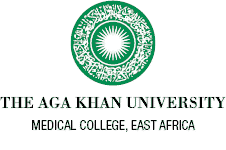About the Residency Program in Anatomic Pathology

The Anatomic Pathology residency is a four-year program that offers a dynamic training ground that prepares residents for a very successful career in pathology, regardless of whether they ultimately choose an academic or a community practice setting.
The training program is geared towards enabling residents to acquire skills in consultative functions, professional knowledge, managerial functions, and education and research.
Our residents have the benefit of training in an integrated department (laboratory medicine and anatomic pathology) with an Anatomic Pathology and Clinical Pathology curriculum. Anatomic pathology and all of the various sections within the laboratory provide access to and experience with a very high volume of material which includes the full spectrum of basic, "bread and butter" cases as well as an unparalleled level of exposure to complex specialty material.
The residency program focuses on six main areas of competency – patient care, medical knowledge, practice-based learning, and improvement; interpersonal and communication skills and professionalism. The program has two clear components, the MMed Part 1, in which residents cover common core courses, rotations in clinical pathology and introduction of various disciplines in Anatomic Pathology. This covers the first two years of the course. The final two years comprise the Part II component which covers in-depth Surgical Pathology, Cytopathology, Forensic Pathology, and Autopsy Pathology. Residents are also required to complete a dissertation, and will only be allowed to sit for Part II examination if it is approved.
Residents are encouraged to gain knowledge and technical skills at a higher level using a problem-based approach. At all times they are assisted and supervised in the acquisition of effective study skills necessary for lifelong learning. Principles of adult learning will be applied from the very first year and they are expected to master the art of self-directed learning.
Selection Criteria
This is done initially by advertisement in the media. The applicant must hold MBChB or equivalent and they must have completed internship training in a recognized institution and registered as a medical practitioner by the Kenya Medical Practitioners and Dentists Board or another mutually recognized body.
A rigorous selection criterion is in place to ensure that the best candidates are selected to join the program.
Selected candidates are requested to attend a three-day orientation program arranged by the Director of Post Graduate Medical Education. This orientation is conducted by the Faculty, the Post Graduate Medical Office and by the Hospital administration during the month of January.
Goals and Objectives in Anatomic Pathology Residency Program
To provide supervised quality teaching and training in surgical pathology, cytopathology, autopsy pathology and forensic pathology.
To provide knowledge and technical skills so that the resident can recognize, interpret and explain pathologic processes in the clinical practice of Anatomic Pathology.
To involve residents actively in internal and external quality control/quality assurance and accreditation programmes of the department.
To enable residents to take responsibility for their continuing professional development and maintain scholarly and professional attributes through continuing education.
To produce pathologists who are competent in performing outpatient procedures like fine needle aspirates.
To involve senior residents in facilitating learning of junior residents and technical staff.
To allow the post graduate to develop to their full potential as consultant pathologists who will effectively direct and manage the pathology laboratory in all its regards.
To prepare resident for life-long membership of the Anatomic Pathology profession and specialist recognition by Medical and Dentist Board of Kenya.
Program Expectations
- Develop an understanding of basic pathologic processes and relate to morphologic abnormalities.
- Acquire skills needed to interpret laboratory data and make clincopathologic correlations.
- Communicate effectively and share expertise with peers and colleagues.
- Develop investigative skills to better understand pathologic processes as they apply to both individual patients and the general patient population.
- Acquire knowledge and experience in laboratory direction and management.
- Assume leadership roles in education of other physicians and allied health professionals.
Duration of Study
The duration of course is 4 years; full time study with a maximum duration of 6 years allowing for the possibility of a maximum of 2 re-sits for the part I and part II examinations.
Evaluation of Residents' Performance
Evaluation of performance is based on an assessment of expected competencies. Workplace-based assessment that involves a process of constructive positive interaction between the learner and a member of the faculty is used to give feedback that builds medical expertise, effective communication, team work, and professionalism. Leadership skills, health advocacy, and scholarly activity are equally recognized. Written, oral and practical/skills examinations are administered as part of the continuous in-training as well as final assessments.


